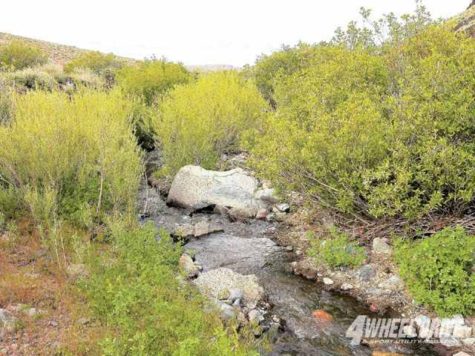Water
From Llewellyn’s 1994 Magical Almanac, we have the following description of this summer holiday:
“A beautiful city was once believed to have risen gracefully off the shores of a small French village in Brittany, France, only to have been washed away in a high tide. Every year, on the first Sunday in August, the priests go to this fabled spot and bless the waters while observers lean over the sides of boats hoping to glimpse remnants of the city. This might be a good day to consider any spells or rituals pertaining to water and hidden truths.”
Holy Wells Day is a day dedicated to Caedda, the Celtic goddess of healing springs and wells.
Ceadda, an Old English Goddess of healing springs and wells, enjoys her holy day of celebration on March 2. While Her place in the hearts of the people has since been appropriated by St. Chad of Mercia, Catholic patron saint of wells, those of us who follow the old ways may care to pay homage to Ceadda today.
To lend energy to this maiden Goddess, visit a natural spring or well. Tidy up the grounds by picking up any refuse that you see on the ground, and leave a small gift of organic flowers or fruit near the water. Naturally sweet gifts are appropriate, as are organic cotton ribbons to bedeck the well.
Saying a few words for Ceadda is also appropriate. Speak from your heart, either out loud or silently, and tell Her how grateful you are for the living waters that spring from the Earth to heal and nourish us. If you wish, you may use this prayer:
Ceadda, Lady of healing waters,
Hear my grateful voice.
Please receive my gift of _______
In acknowledgement of your Divine work
Thank you for protecting and keeping the sacred springs and wells
I pay You homage and remember You
Sources: The Pagan Book of Days
On July 25, in ancient Rome, the annual Furinalia (also spelled Furrinalia) took place in honor of the Goddess of springs, Furrina. This was the time when a drought might begin to “bite,” and the value of springs is appreciated. This is a good day to remember our vital reliance on sources of water and how important it is that they be kept clean and free of pollutants and contaminants.
The Egyptians called it, Night of a Teardrop. On this night, (June 16) when the moon rose high in it’s sky, Isis shed one blessed and mournful tear for her beloved, Osiris. That precious tear was then collected into the palm of the Goddess of the River Nile, Satis, in which she placed it within’, causing the Nile to bring forth it’s annual flood. Even in Isis’ pain, something divine came forth.

The Nile River has always been the backbone of Egypt. The mighty river flows for some 4,000 miles from the mountains of Equatorial Africa (Blue Nile) and Lake Victoria (White Nile) before it empties into the Mediterranean Sea. Were it not for the Nile River, Egyptian civilization could not have developed, as it is the only significant source of water in this desert region. It would flood each year, bringing in silt-laden waters; when the waters receded the silt would stay behind, fertilizing the land,the silt would be helpful for growing crops.
If a flood was too large it would wash over mud dykes protecting a village. A small flood or no flood at all would mean famine. A flood must be of just the right intensity for a good season.
The Ancient Egyptians used an object called a nilometer to record how high the Nile was during the year. The nilometer was a staircase that proceeded down into the Nile with marks on it so the Egyptians knew how far the river rose. Nilometers were placed at various points along the Nile in order to monitor the changes in the water level. It was recorded that at the start of the flooding the clear waters would turn a turbid red.
As the agriculture of Egypt revolved around the Nile, so did the social life of the ancient Egyptians. During inundation when there was less to do, people had more time for recreational activities, they played games, held sporting tournaments and regularly feasted.
When the River Nile receded the appearance of the land had radically changed and there was a great rush to restore boundaries. There were many disputes as markers had moved, banks had collapsed, and distinguishable features had disappeared.
~Compiled from various sources






